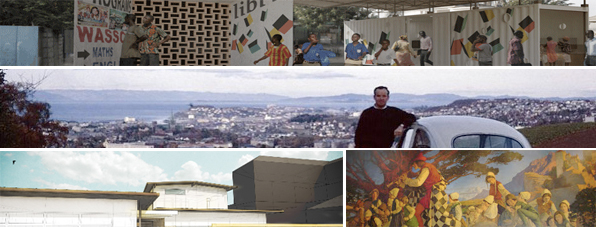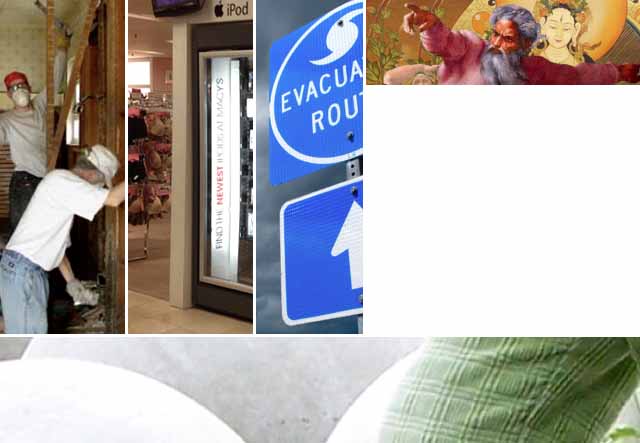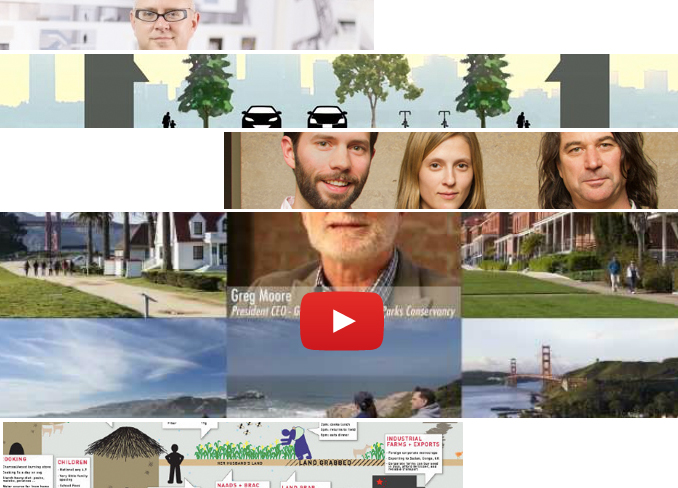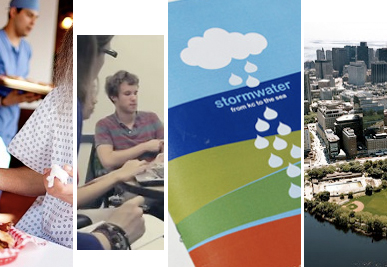Researching Ways to Improve Building Performance Without Sacrificing Comfort

Eskew+Dumez+Ripple (EDR) is an architecture firm located in New Orleans, Louisiana with 45 full-time employees augmented by a paid Research Fellow program. The 2012-2013 Fellowship program hosted one 3-month and one 12-month Fellow, both of whom had just graduated with professional architectural degrees.
EDR brought Z Smith, an architect, to the firm in 2009 as a designer but with the intent of building something different for the firm. With his own share of patents and papers published in peer-reviewed journals from his earlier career in electrical engineering and computer science, Smith takes a scientific approach to problem solving. In more than 3 years at EDR, Smith has incrementally instilled a layer of scientific research into the firm’s work – testing design hypotheses and gradually shifting the firm from a design-first firm to a firm integrated with design performance. In 2012, Smith was promoted to the Director of Sustainability and Building Performance and charged with launching and coordinating the Research Fellowship program. Eskew+Dumez+Ripple invests 3% of its revenue in this research initiative. Smith spends half his time on the research program, 25% of his time on ‘applied research’ linked to particular projects, and the remainder is spent directing projects for which he has responsibility.
Research is the business of generating surprises”
– Z Smith
While the Fellowship application announcement describes the focus as “quantitative research, documentation, and analysis related to environmental controls and building performance on built works within the firm’s portfolio and in the greater collection of works in the New Orleans region,” Smith notes that only 60% of the program adheres to the laid out goals in order to leave 40% open to serendipity.
The Fellowship is an essential ingredient of EDR’s research program. Even though Fellow research on the energy usage and comfort on buildings largely involves EDR projects, they are shielded from the deliverables of client work and are able to focus implicitly on research. This allows EDR to develop intuitions. In one example, having the resources to document patterns of a library’s usage, EDR was able to cut the building’s energy use by more than 35% -- a savings of $180,000 annually. As a result, the initial contract to design a building addition was expanded to encompass an energy improvement project for the full building.
However, Smith and the Fellows are not the only participants in EDR’s research efforts; project managers, clients, staff volunteers and even local high school and university students are also drawn in. “Project managers,” as stated in the firm’s Winter 2012 Sustainability Action Plan, “are expected to identify performance benchmarks against which the project will be compared throughout the design, construction, and occupancy phases.” By asking clients to share at least the first two post-occupancy years of gas and electric utility usage data, the benchmarks become the basis of long-term client relationships that provide valuable information on every built building EDR designs—and has led to a high percentage of return business. At no extra cost to the client, the firm puts in the time needed to continue testing the buildings’ performance and the occupants’ comfort against the predictions of the design over time.
Energy efficiency without the cost of comfort is something EDR works to refine in the office and at home, too. EDR staff is encouraged to contribute data from their homes’ energy usage to compare and share notes with other participating staff members. Employees with especially high-performing houses are profiled and shared with the office and the community.
EDR also taps next generation of built environment professionals to help increase their understanding of building performance. With the National Council of Architectural Registration Boards (NCARB) grant awarded jointly to EDR and Tulane School of Architecture, students were trained and equipped to conduct field studies of 16 sites in New Orleans (four of which are EDR projects), measuring the building’s performance and the comfort of its occupants and making sense of the findings. Per its commitment to NCARB, this became the basis for a university course and was used as a teaching module within TSA’s required building environmental controls course, “Buildings, Climate, Comfort” taught by an EDR staff member.
Sharing the knowledge gained from EDR’s research initiative is done in a number of ways. Internally, comparisons of staff utility data, project performance, as well as other environmental research and information are included in EDR’s sustainability internal and client-facing newsletter, “ The SubMeter.” Smith and the Research Fellows also hold periodic lunch-and-learn sessions. Collectively, these drive interest and awareness in sustainability issues among staff and teach employees about and how to use new equipment.
EDR is also interested in sharing what they learn outside of the firm. Within the related-design professions, the firm is actively involved in the Sustainable Design Leadership, a closed group of industry professionals where best practices and tips are openly shared. The firm is signed on to the AIA 2030 Commitment and publishes its Sustainable Action Plan in accordance with the Commitment’s reporting requirements. Staff are also actively giving this information away to the New Orleans community through participation in a city-wide green homes open house, as ACE mentors for high school students, guest lecturing at universities—and as mentioned earlier, even teaching full courses.
 If you are interested in learning more about thought leadership, please take our Thought Leadership and Innovation Survey. As a participant you will receive access to the full report of our findings. Learn more about our research from our post, "Agents of Change in the Built Environment."
If you are interested in learning more about thought leadership, please take our Thought Leadership and Innovation Survey. As a participant you will receive access to the full report of our findings. Learn more about our research from our post, "Agents of Change in the Built Environment."






